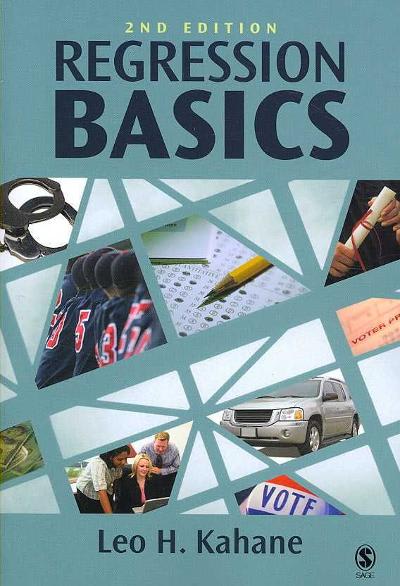Question
Inequality, Poverty, and Precarity in Contemporary American Culture book analyzes the Discourse generated by pundits, politicians, and artists examine how poverty and income gap are
Inequality, Poverty, and Precarity in Contemporary American Culture book analyzes the
Discourse generated by pundits, politicians, and artists examine how poverty and income gap are
Framed through specific modes of representation (Lemke, 2016). Lemuke sees the rising concern
of economic hardship, analyzing hundreds of scholarly and journalistic articles and books whose
Authors explain the causes of inequality or think there is a problem with the effects (Lemke,
2016). The narrative of poverty and the opportunity narrative, Lemke's concept of precarity,
shows new insights into the American situation and the textuality of contemporary demands for
Equity (Lemke, 2016). Her study of a vast range of artistic and journalistic texts brings attention
to a self-precarious mode of representation, both in the modern and etymological sense, denoting
Both insecurity and entreaty (Lemke, 2016). The keen eye of a cultural studies scholar, her
The innovative book made a necessary contribution to academic and popular critiques of the social.
Effects of neoliberal capitalism (Lemke, 2016). She states that federal statistic shows that
Poverty shock remains abstract. Lyndon B. Johnson tried to fight the war against poverty but
I could not beat it (Lemke, 2016). It is costly and unable to attach to mass poverty and inequality,
Moreover, we often remark on the size of the poor population (Lemke, 2016). However, a study of child
Poverty costs the entire nation $500 billion annually (Lemke, 2016). Also, extra money is needed
For education, health, criminal justice costs, and loss of productivity. They will not be left with
An inheritance (Lemke, 2016). Generation Z will be economically disenfranchised by the time
They are of retirement age (Lemke, 2016). Economic inequality is replete with slogans of 1
Percent; we are the 99 percent of the gap and risk euphemisms (shrinking, dwindling, melting of
the middle class) (Lemke, 2016). This is not good when our middle class is in trouble (Lemke,
2016).
We will have a high polish and a low style, no in-between. We will be like communist
countries. Karl Marx's definition of communism is the ability to each according to their needs.
In the 1950s moreover, the 1960s was when the Great Compression Dream was associated with
Homeownership, car ownership, and the nuclear family (Lemke, 2016). Nowadays, the
American Dream is in crisis. John Edwards, who was elected into the US Senate, stated that he
wanted Americans to "Restore the American Dream (Lemke, 2016)." The American approach to poverty was to chancy affair- a person's care depended on the town where one lived and maintained a good relationship with the community leaders. Poverty was manageable on a case-by-case until the 19th century.
The Trouble with Grit describes a science-loving student who is struggling with turning in homework (Gorski & Pothini, 2018) and sympathizing with Ms. Grady's sentiments and frustrations with Samantha not turning in her work when her test scores show that she is intellectually capable of completing the tasks. Ms. Grady becomes increasingly frustrated when she cannot reach a parent via phone and learns that Samantha's younger siblings turn in their homework promptlyguessing before the case study revealed that Samantha was dealing with a tough home life that prevented her from focusing on her studies at home. During the investigation and speaking with another teacher Ms. Grady learned that Samantha's mother is a single mother. She works late at night, and Samantha is the one who cares for her younger siblings when her mother is at work. I learned that Samantha does not have the time to complete her homework because she helps her mother care for her younger siblings.
In reviewing how Ms. Grady's narrow scope of Samantha's situation. In thinking that her mother is irresponsible in making Samantha care for the younger siblings and is not working on her school work. We can determine that Samantha's mother is not college educated. She works two jobs, and the choices and decisions she makes with her children. Samantha is excited to be in school and does well on her quizzes and tests. Ms. Grady should help Samantha by asking her to complete her homework before or after school. This way, she is caught up and is on the same page as her classmates. Ms. Grady should put Samantha's mother in communication with a school counselor that can provide her with can provide Samantha's mother with resources to receive help by putting her children in childcare, community resources, and help to pay her bills.
A long-term plan is for Samantha, her mother, and her siblings should be in safe places while her mother is working. Samantha can do the things a child does instead of being responsible for her younger siblings. Samantha's mother is receiving help. As a counselor, help a single mother get ahead by helping her with resources of Section 8 housing, food stamps, help to pay bills, daycare, and school. Being poor does not mean that one should feel stuck. Helping them by providing resources, counseling, and education is good. The poor's influence is that they cannot improve or get ahead in life. That is not true. I came from an impoverished family and got out because I disliked living that lifestyle. I wanted to do better and have a better life for my children.
Step by Step Solution
There are 3 Steps involved in it
Step: 1

Get Instant Access to Expert-Tailored Solutions
See step-by-step solutions with expert insights and AI powered tools for academic success
Step: 2

Step: 3

Ace Your Homework with AI
Get the answers you need in no time with our AI-driven, step-by-step assistance
Get Started


